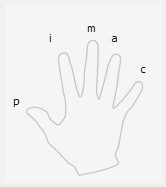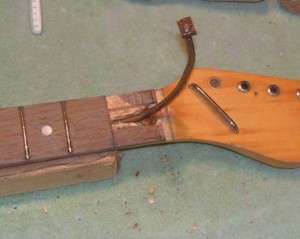
Playing the guitar: where to start?
Contents
To learn how to strum the guitar, you need to be not only a guitarist, but also a little bit of a drummer. Combat is nothing more than a collection of individual strokes combined into a certain rhythmic pattern. Its character largely depends on the specific style (flamenco, rock, pop, reggae, march, tango) and size (2/4, 4/4, 6/8). It is also necessary to distinguish between rhythmic accompaniment parts for one guitar and a guitar in an instrumental environment (band, orchestra, Dixieland).
Rhythmic patterns
Where to start mastering the game of combat? No matter how strange it may sound, the fact is that you need to put the guitar aside and become familiar with the basics of rhythm. To do this, you need to analyze the duration and size in exercise 1, and then clap your hands, the recorded rhythmic figures. Just don’t be afraid of musical notation, if you don’t understand it yet, then it’s time to start understanding it – it’s simple, and “Basics of Music Notation for Beginners” will help you.

There are 4 beats in a measure of 4/4, we count each beat with a kick and pronounce 1 and … 2 and … 3 and … 4 and … In the first measure there are 4 quarter notes, which means that for each beat (kick of the foot) you need to make one clap. It is necessary to strictly maintain the rhythm.
Having mastered the pattern of the first bar, you can move on to the second. Here there are two eighth notes for every beat of a measure. In terms of counting, it looks like this: on “1” (simultaneously with the kick of the foot) – the first eighth note, on “i” (the leg rises) – the second eighth note. In other words, for every kick, there are two claps.
In the third measure there is an alternation of a quarter note and two eighth notes. In practice, it looks like this: 1 beat – “1 and” (simultaneously with the kick, 1 clap), 2 beats (eighths) – on “1” (simultaneously with the kick, 1st eighth), on “and” (foot the 2nd eighth note rises). The third beat is played like the first, the fourth like the second. It turns out one long clap (1 and), then two short ones (“2” – clap, “and” – clap) and again a long one (3 and) and two short ones (4 and).
Now you need to repeat the pattern in the 4th measure. This is the actual beat rhythm, which will be discussed in exercise 4. The first three beats are the same as in the second measure. Eighths – 2 claps for each kick, fourth beat (4 i) – quarter note, 1 clap for each kick.
Learning to strum the guitar – exercise 1
 Now you can play the learned patterns on the guitar. All exercises are discussed using one Am chord as an example, in order to concentrate on mastering the technique.
Now you can play the learned patterns on the guitar. All exercises are discussed using one Am chord as an example, in order to concentrate on mastering the technique.
By the way, if you don’t yet know how to play the Am chord on the guitar, then we have an introductory lesson especially for you – “For those who find it difficult to play Am,” learn quickly!
In the notes, in Latin letters it is indicated which fingers should be struck on the strings (notation diagram – see the drawing with the hand). The arrow indicates the direction of impact – down or up. At the top above each beat is a beat.

We play the first measure with an alternating quarter stroke, strike down with the thumb p (1 and), then strike upward with the index finger i (2 and) and similarly 3 and 4 beats. The second measure is the same stroke, only in eighth notes on “1” there is a down stroke p, on “i” there is an up stroke i. For each beat of a measure (foot strike), two hits are made on the strings. In the third measure, quarter notes alternate with eighth notes – one long blow with the thumb down (1 and) and two short ones with the index finger up (on “2” – blow and on “and” – blow).
Learning to strum the guitar – exercise 2

This exercise will help you master the technique of muting the strings, which is very often used when playing with strikes. In the exercise it is indicated by the symbol X, which stands instead of notes. The chord is not removed from the fretboard, the fingers of the left hand maintain the fingering of the chord, in this case Am, while the right hand mutes the strings.
Now, in more detail about the technique: the index finger (i) is in a bent state before hitting the strings, and at the moment of impact it bends in the plane of the strings. And immediately after the blow, the palm is placed on the strings, while the fingers are straightened. The result should be an absolutely dull short sound, without any extraneous sounds.
In the second and third measures there is an alternation of blows: muffling i with the index finger (down) and blowing up with the same finger. First in quarter notes, then in eighth notes. The third beat is a full-fledged battle. For example, they can play ditties and fast, funny songs in polka rhythm.
Learning to strum the guitar – exercise 3
And with this fight (2nd bar of the exercise) the song by V. Tsoi “A Star Called the Sun” is played. Do you remember what kind of music this is? Watch this video:
Well, now let’s move on to the exercise itself:

To make it easier to master the fight, you need to take its first part and work it out separately (1 bar of the exercise). On the first beat (foot strike), there are two hits on the strings on “1” with the thumb down, on “and” with the index finger up. On the second beat (2 and) – jamming (one beat), etc.
And now the battle is complete, we remember the rhythmic pattern from the 4th measure of the first exercise. First beat “1” – p down, “and” – i up; The second beat – “2” – mute i down, “and” – i up; The third beat – we make two beats, as in the first beat; The fourth beat is a mute i down “4 and” one beat.
The more practical training there is, the better. The strokes must be brought to automaticity so that they do not distract during the rearrangement of chords. It is also very useful to listen to how professional guitarists play the accompaniment, analyze the drawings and subsequently apply them in your performing practice.
So, you’ve worked hard to learn how to strum the guitar, now after all these exercises you can play something interesting. For example, the same song by V. Tsoi. Here’s a detailed video analysis of it, just in case:
If you are learning to play the guitar, you may also find this information useful – “How to tune a classical guitar?”





